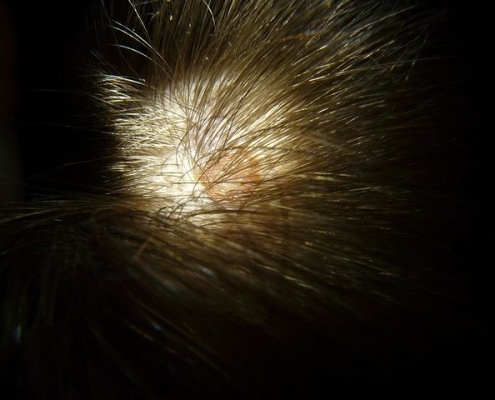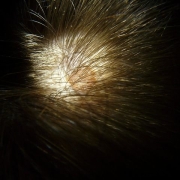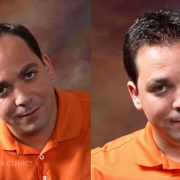 Irritant dermatitis, a type of contact dermatitis, is a common condition that can result in substantial discomfort and multiple issues — including hair loss. The irritation can be caused by a host of different factors — determining what those factors are and successfully treating the condition often requires consultation with your doctor. After all, the irritation can be from alkaline materials like detergent, fabric softeners, soaps and solvents, or it can be caused by hair-dyes, pesticides or rubber gloves, maybe even your shampoo. While allergic dermatitis is another common condition, irritant dermatitis does not imply you have an allergy to a substance, rather that your skin is reacting to an irritating substance.
Irritant dermatitis, a type of contact dermatitis, is a common condition that can result in substantial discomfort and multiple issues — including hair loss. The irritation can be caused by a host of different factors — determining what those factors are and successfully treating the condition often requires consultation with your doctor. After all, the irritation can be from alkaline materials like detergent, fabric softeners, soaps and solvents, or it can be caused by hair-dyes, pesticides or rubber gloves, maybe even your shampoo. While allergic dermatitis is another common condition, irritant dermatitis does not imply you have an allergy to a substance, rather that your skin is reacting to an irritating substance.
What Does Irritant Dermatitis Look Like?
Irritant dermatitis is similar to the way a burn appears, and it can be solid red or patchy. On your scalp, irritant dermatitis causes hair loss, a rash and itchy discomfort. Additionally, you may experience a sensation of excessive warmth or tenderness, develop red bumps or blisters, or have scaly and thickened skin. Some people who suffer with irritant dermatitis may feel a burning sensation or pain, while skin inflammation and small cuts can also form. Symptoms can vary over time, depending on what caused the reaction in the first place. Irritant dermatitis frequently occurs due to hair products, cosmetics and perfumes, with your head, face and neck affected most often.
Treating Irritant Dermatitis
If irritant dermatitis occurs, you’ll want to find out why and cure it as quickly as possible. Complete cures can take three weeks or less. Why not contact your care provider and find out what you can do to treat it and prevent irritant dermatitis from recurring? Your provider will recommend treatment based on whatever is causing the problem, beginning with a throughout inspection of your skin and questions about any substances you’ve come in contact with recently. Allergy testing using skin patches may also be performed.
From avoiding exposure to specific substances to using topical medications including creams, ointments and moisturizers, or oral medications, there are a variety of ways to treat irritant dermatitis. Anti-itch lotions can soothe the skin while treatment takes effect, and when hair loss occurs, it can also be successfully treated.
Ohio Hair Loss Specialists
Van Scoy Hair Clinics has been serving men, women, and children across Ohio and beyond who suffer from hair loss, balding, and thinning hair. We specialize in non-surgical, non-invasive hair replacement and hair loss solutions for men and women. To schedule a free consultation call us at (419) 289-6665 or simply fill in the short, confidential form on our REQUEST CONSULTATION page.





